BlackBerry 10 Teased Kicking Off BlackBerry World
by Jason Inofuentes on May 1, 2012 6:46 PM EST- Posted in
- Laptops
- Smartphones
- RIM
- BlackBerry
- Mobile
- BlackBerry BBX
- Blackberry 10
As the lights came up on Thorston Heins opening remarks at BlackBerry World 2012, expectations were... well, low. There was always the possibility that we would hear of some huge shake-up that would drastically alter RIM's course; say, switching to a services model and opening their BlackBerry Enterprise Server offerings to the competition. Or, we could hear talk of the impressive results of the hard work of a talented team of engineers and designers, and hopes and assurances that we'd love it. We've heard this kind of talk from struggling giants, including a year ago this past February when Jon Rubinstein introduced us to the Palm Pre 3 and TouchPad. Though Heins remarks included a hint at the kind of course correction we might have speculated on, he quickly transitioned to a preview of the QNX-based BlackBerry 10. And though it's familiar, it's nothing like 7.
Vivek Bhardwaj, RIM's Head of Software Portfolio, lead our preview and focused on two key areas, app flow and input, and threw in an impressive peek at the camera app. BlackBerry 7 did little to alter the way you use a BlackBerry. The PlayBook's OS is the basis for what we're seeing here, and is fundamentally what's running in the BlackBerry 10 Developer Alpha hardware being handed out at the event today. The PlayBook's multitasking echoed the scheme we saw in WebOS, cards that can be quickly swiped between. BlackBerry 10 introduces a scheme that stacks cards that have been opened in succession, and allows a drag to the left to peek at the stack underneath. This paradigm borrows much from WebOS 3.0, though it's unclear what's changed in terms of app switching. If it's anything like the PlayBook's multitasking method, it'll be a huge improvement over BlackBerry 7.
A brief peek at the home screen showed large panels reminiscent of Windows Phone's Live Tiles but with a less minimalist design. Having used the icon buffet of iOS and the widget explosion that Android can become, I can see a benefit to a focused but informative home screen that emphasizes a few key tasks while deprecating other tasks to an app launcher or notification bar. BlackBerry users that move to this from any prior BlackBerry will find themselves in very unfamiliar territory.
So if BlackBerry OS has been such a drag for so long, what kept users so attached to their devices? For some it was security concerns. Others fell in love with the BlackBerry Messengers features. Above all else, though, users loved their keyboards. RIM's portrait QWERTY keyboards are legendarily easy to use and comfortable for even longer typing sessions. As adept as I've become typing on on-screen keyboards of all sizes, I will never approach the typing speeds nor accuracy I acheived with my old 8830. But the design isn't for everyone, and RIM is designing BlackBerry 10 with these users in mind.
Users of Swype on Android will find something familliar in the demo RIM showed of its new soft keyboard. The keys look large and well spaced, and much mention was made of the predictive text engine constantly learning from a users behavior (likely sourced from SwiftKey). But instead of offering suggestions within the text field or in a bar above the keys, the suggested word is overlaid just above the next key the software thinks you might press. Often, even with longer words, once you've become adept at using a particular soft keyboard, you can complete the typing of a word faster than it would take you to recognize that a correct suggestion has been made and move your thumb from the keys to the suggested word. This solves that issue by putting the suggestion in the natural path of your thumb. This strikes me as such an obviously good idea that I want it on every device. But success here is, as always, in the execution. If the prediction engine consistently picks the wrong word then you'll do no better than with any other keyboard.
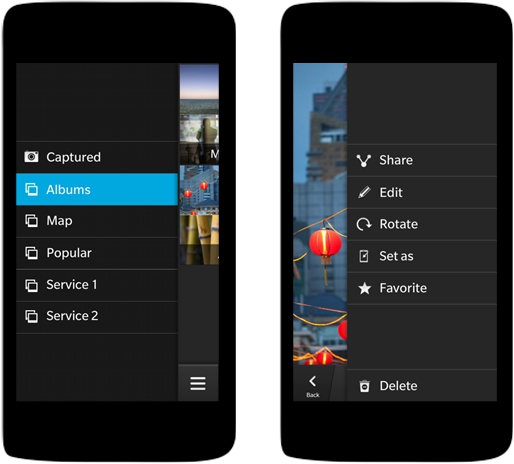
The last demonstration focused on the camera app, and one particular feature we might see crop up in other OSes. Having taken a picture, say where someone blinked, the user can tap on an area of the picture, such as a face, and is presented with a loupe over that area and a shuttle with which they can advance forward or backward amongst a cache of images taken just before and after the shutter release. This has been done with the entire image in phones from Android OEMs with their ICS camera apps, but RIM purports to do this with isolated areas of the picture. Technically, this seems like a good example of how far mobile computing has come. Taken within the context of mobile devices though, this seems like a really handy feature, that I'm unlikely to use very often.
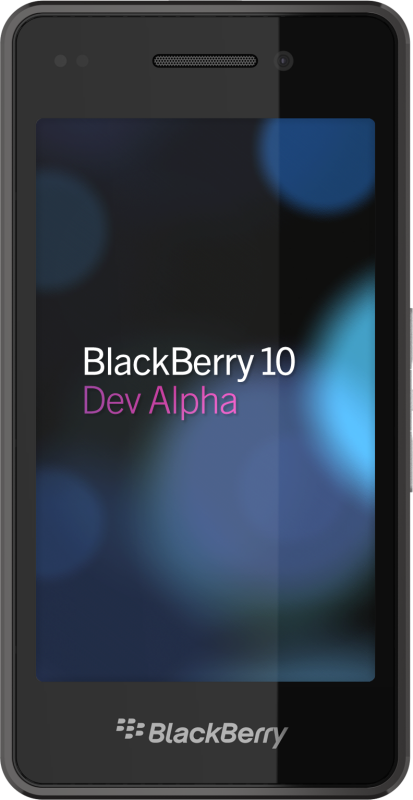
Heins and company were unwilling to discuss future hardware except to stress that the Dev Alpha devices were NOT final hardware. A few things can be inferred from the Alphas, though. If you imagine what a shrunken PlayBook would look like, you're awfully close to what you'll find if you acquire a Dev Alpha. The display is actually higher resolution than the PlayBook's at 1280x768, and at 4.2" makes it a rather dense display at that. The general design is very reminiscent of the 7" tablet with a matte black body and somewhat squared edges. The internals are most likely the same (TI OMAP 4430) though that's unconfirmed; what is known is that the device has 1 GB of RAM and 16 GB of on-board storage along with microSD, NFC and quad band HSPA+ connectivity.
FInal hardware is likely to include a similarly high resolution screen; RIM wouldn't be asking developers to optimize for that screen if they were going to simply ship a 3" 320x240 LCD. NFC can certainly be expected, and though RIM seemed to have an almost Luddite fascination with outdated SoCs in some past devices, we can expect the silicon to be equivalent or better than the PlayBook's OMAP 4430. Despite the emphasis on soft keyboards during the presentation, RIM wouldn't abandon their portrait QWERTY's, and have even committed to implementing the same text prediction engine on those devices.
Palm's gamble was a good one. Once the dominant player in mobile computing, the shift from Palm OS to WebOS was huge and, at times, terribly well executed. But where Palm faltered (performance, hardware and bugginess, notably), the deficits were too great to overcome the successes of Android and iOS. With WebOS defeated, RIM now prepares to take its gamble; and attempt to maintain their corporate customers while also growing amongst consumers. We'll hopefully not have to wait long to see how they fare.


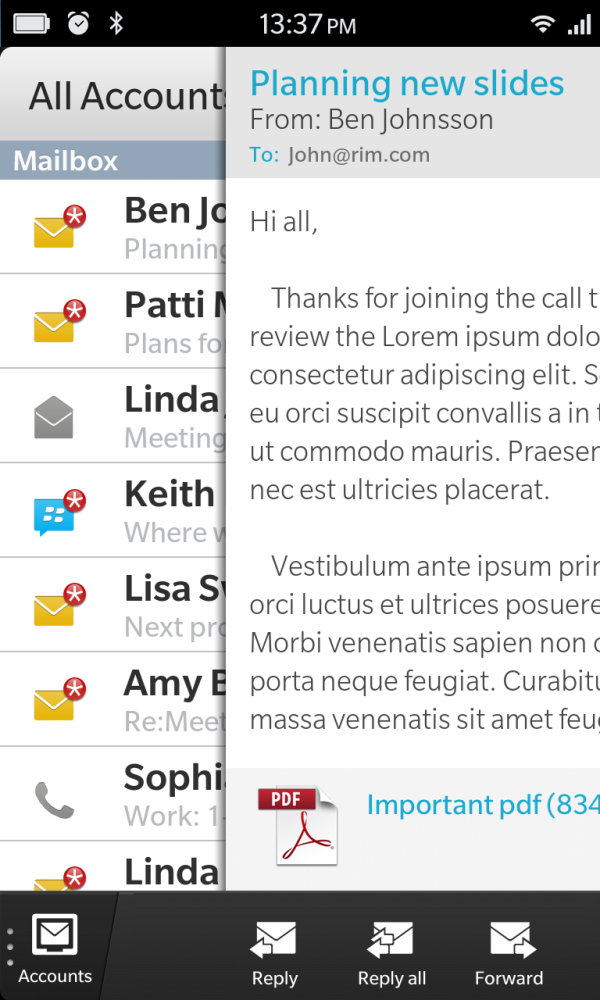
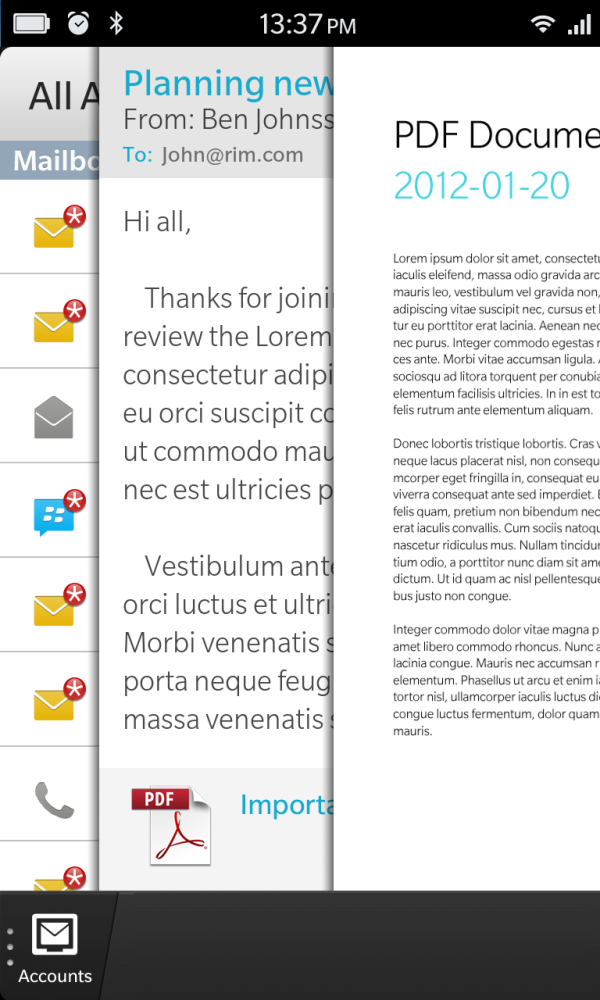
_575px.jpg)
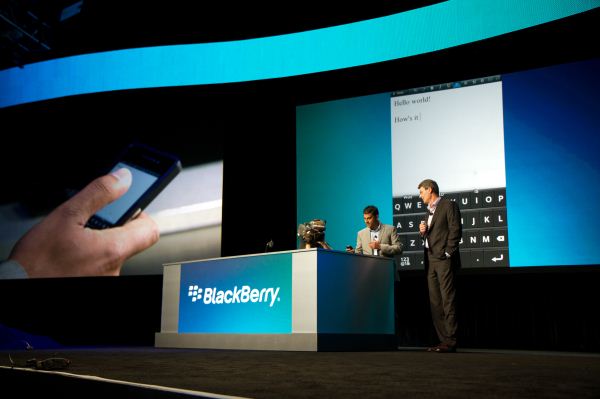
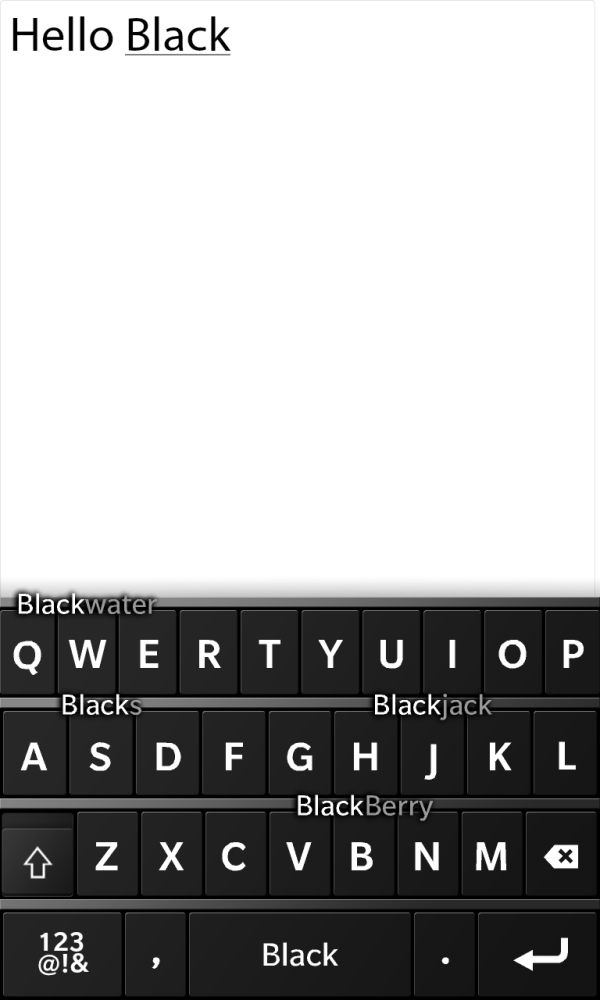








24 Comments
View All Comments
chucknelson - Wednesday, May 2, 2012 - link
I guess the mobile market is large enough to warrant a ton of competition, but I just don't see what RIM can offer that will steer people away from existing, well-established platforms (Windows Phone 7 isn't quite there, but people love to talk about it).Their glory days are over, but they can probably do well enough to continue to exist. I sure don't know anyone that cares about RIM or the Blackberry brand anymore, though. All I see (and hear) are iPhones all day long.
BSMonitor - Wednesday, May 2, 2012 - link
And it's not even close to market yet. Catch up 3 years after losing 75% of their smart phone market is a bit weak..Only reason they exist, is corporate higher ups know the name and continue to budget for them.. And we all know how impossible it is to steer the higher-ups..
DukeN - Wednesday, May 2, 2012 - link
This is complete horseshit.Corporate 'higher-ups' know Blackberry is the easiest mobile product to manage, especially when you have hundreds of devices.
There is nothing else from any other competitor.
Also, corporate 'higher-ups' give a shit or two about security, stability and application control. Things zit-poppers on AT won't understand or care about.
Makaveli - Wednesday, May 2, 2012 - link
Agree Duken,BS monitor doesn't know what he is talking about!
DigitalFreak - Wednesday, May 2, 2012 - link
Spoken like a true corporate "higher-up" or RIM shareholder.DukeN - Wednesday, May 2, 2012 - link
Um, I'm at IT pro like a lot of people here.And I have to handle Blackberry devices amongst many other things (like PCs, storage, backups, exchange, etc).
Not a VP or an owner or anything like that. But I have the common sense to know what makes sense to a business, instead of whining about it like a Jersey Shore fan.
And no, I don't own RIM shares (or any other stock FWIW).
I just find the fancy with shiny gadgets a little ridiculous, for sometimes the non-shiny ones work well in other environments.
steven75 - Wednesday, May 2, 2012 - link
I just installed a provisioning profile on my iPhone today to connect to the secured WiFi at my 10,000+ employee company.You were saying?
DukeN - Wednesday, May 2, 2012 - link
Um, remote management is about more than connecting your device to Wi-fi or accessing email.Ask your IT department how they would make changes to 100, or 1000+ mobile devices if needed.
Also, how would you handle an employee you fired who hasn't turned in his phone (and has all kinds of sensitive data) on it?
Or how you would make specific policies for various devices? eg this class of users browse using WAP, prohibit certain class from installing apps, etc.
Oh, and do all of the above to hundreds of devices. Let me know when your iPhone has an app for that.
Lifted - Wednesday, May 2, 2012 - link
"Let me know when your iPhone has an app for that. "Now you know.
www.mobileiron.com
www.zenprise.com
boxtone.com
You were saying?
DukeN - Thursday, May 3, 2012 - link
None of those are native to the OEM (so why would a decision-maker risk a migration?). And they cost the same (if not MORE) than BES.And most of them have nowhere near the functionality of BES - the best of the bunch is boxtone (they've been doing it for a while), but even Boxtone falls way short of BES.
There's a reason companies aren't falling over themselves to get rid of BES.
The one thing still that none of these still address is PIM experience (email, contacts, calendar, notes, etc) is far superior on Blackberry for the Enterprise. WP7 comes close but the efficiency is terribly lacking.